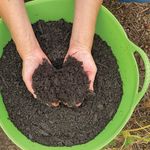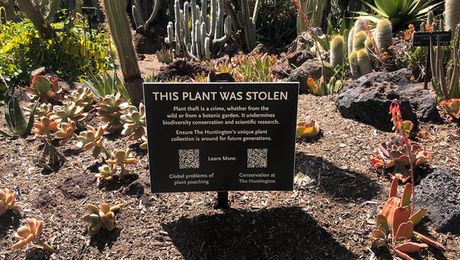
The topic of climate change has come to permeate all facets of our lives. From the evening news to social media, discussions of carbon footprint and global warming are never far away. Although public controversy continues to swirl around climate change, the scientific consensus on climate change is solid. In a recent Pew Research Center survey, 87% of scientists indicated they believe the earth is getting warmer because of human activity. With the unrelenting media focus on changing weather patterns, many people are wondering whether it’s time to change the way they garden.
The shape of things to come
The use of fossil fuels has undeniably increased the amount of greenhouse gases such as carbon dioxide (CO2) and methane in the atmosphere. Since the Industrial Revolution, atmospheric CO2 levels have increased from around 280 parts per million (ppm) to over 400 ppm. This shift alone has the potential to impact plants and gardening. During photosynthesis, leaves take up CO2 to produce sugars for plant growth, storage, and defense. Most plants, however, increase their photosynthetic rate as CO2 increases well beyond 400 ppm, resulting in a “CO2 fertilization” effect. Not surprisingly, many fast-growing, weedy, or invasive plants are often better able to take advantage of this growth boost than desirable garden plants.
The other issue with increasing CO2 is its ability to trap heat near the earth’s surface. By now, most people are familiar with some of the most widely cited projections that average global temperatures will rise by up to 2°C (3.8°F) by the middle of this century. The challenge for gardeners looking into the future, however, is much more than just rising temperatures. Two key concerns are increasing temperatures in winter and increasing weather extremes.

One often-overlooked aspect of climate change is that winter minimum temperatures are rising faster than overall average temperatures. For those of us in northern sections of the country, this may seem like a good thing: Who wouldn’t want a warmer winter? But increasing winter temperatures have a couple of important negative impacts. First, warmer winters allow the northward spread of insect pests whose distributions are currently limited by minimum winter temperatures. For example, research in Massachusetts and Connecticut demonstrated that overwinter survival of hemlock woolly adelgid increased with increasing temperatures, suggesting the range of this devastating pest will move northward in response to warmer winters. Second, warmer winters have resulted in longer growing seasons for trees and shrubs due to earlier budbreak. Again, this may seem like a good thing at first blush but could have a dire impact on fruit production, since early flowering increases the potential for damage from spring frosts. An example of this was the severe frost damage that ruined cherry, peach, and other fruit tree crops when April frosts followed one of the warmest months of March on record in the eastern half of the United States in 2012.
The other disconcerting part of climate change for gardeners is that weather patterns will not just become warmer in the future but will becoming increasingly extreme and erratic. While global models predict general warming, the probabilities also increase for more intense, longer-lasting droughts and more extreme heavy rainfall events. Some scientists have also suggested that climate change may result in instability in jet stream patterns that could increase the frequency of polar vortex events such as the ones that produced record cold temperatures in early 2014 and 2015.

Adapting to change
The projected increased variability in future weather patterns is a daunting challenge for many gardeners. If we only had to contend with consistent, gradual warming, we could simply borrow plants from our southern neighbors. But as the brutal winters of 2014 and 2015 demonstrated, pushing your USDA Hardiness Zone can have alarming consequences. The problem is that plants don’t respond to averages, they respond to extremes. There were countless examples of trees and shrubs that flourished during relatively mild winters in the 30 years prior to 2014 that succumbed to winter 2014 or 2015. Here in Michigan, the carnage included plants such as true cedars (Cedrus spp., USDA Hardiness Zones 5–9) and vinifera wine grapes (Vitus vinifera and cvs., Zones 6–9). Ultimately, adapting gardening practices to climate change becomes an exercise in managing risk. Like managing other types of risk, diversity is the best tool gardeners have for dealing with climate change.

Maintaining a high level of plant diversity will also provide a hedge against new insect pests that may turn up as their ranges expand. Gardeners can mix in experimental warmer zone plants while building a foundation of the tried-and-true. Annuals and herbaceous perennials make good candidates for experimentation since they can exploit longer growing seasons and warmer summers without being subjected to vagaries of a sudden February cold snap. Of course, we tend to want what we can’t have, and some homeowners will want to push their Zone for trees and shrubs as well. The key is to not bet more than you can afford to lose.
Knowing and understanding your site will become increasingly important for gardeners. Nearly all climate models predict an increase in extreme rainfall events. Many stress-tolerance traits in plants are a matter of degrees, but flood tolerance is often a yes/no response. Plants that are not flood tolerant can be lost after even short periods of inundation. Be sure to know what plants need to be kept high and dry.
Recommending mulch in the face of climate change smacks of the old advice to “take two aspirin and call me in the morning,” but a proper layer of ground bark or wood chip mulch will become a gardener’s best friend as never before. The ability of mulch to conserve moisture will be critical during intense drought, especially in beds where irrigation may not be practical or desired.
Our research has shown that mulch can reduce summer soil temperatures by 20°F. In winter, mulch provides an insulating layer that can prevent frost heaving and protect the roots of woody plants and herbaceous perennials. Mulch also helps to keep weeds in check, which will be even more important as weeds become increasingly aggressive.
—Bert Cregg, PhD, is an associate professor in the horticulture department of Michigan State University.
Fine Gardening Recommended Products

Fine Gardening receives a commission for items purchased through links on this site, including Amazon Associates and other affiliate advertising programs.

Gardener's Supply Company Large Garden Tubtrug
Fine Gardening receives a commission for items purchased through links on this site, including Amazon Associates and other affiliate advertising programs.

A.M. Leonard Deluxe Soil Knife & Leather Sheath Combo
Fine Gardening receives a commission for items purchased through links on this site, including Amazon Associates and other affiliate advertising programs.



















Comments
Log in or create an account to post a comment.
Sign up Log in